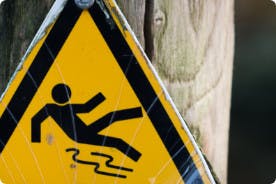First published on Friday, March 18, 2022
Last updated on Monday, September 8, 2025
Jump to section
- What are my legal obligations as an employer?
- Harmonized Approach
- Legal requirements
- Key Responsibilities
- Common causes of accidents in the workplace
- Steps you should take to prevent fatal accidents
- What should I do if a fatal accident occurs?
- What are the consequences for employers?
- The importance of compliance
- What are the best practices for building a safe workplace culture?
- Preventing fatal work accidents with BrightSafe
Workplace fatalities are a serious concern for business owners across Australia. Each year numerous workers lose their lives due to accidents that could often have been prevented with the right safety measures. As an employer, it’s both your moral and legal responsibility to keep your employees safe.
Over the past 10 years (2024), there have been more than 1,880 traumatic injury fatalities in Australian workplaces, and over 1,165,100 workers have made a serious workers’ compensation claim involving more than one week of working time lost.
Findings from Safe Work Australia’s research, Safer, healthier, wealthier, show that, in the absence of work-related injuries and illnesses, on average each year Australia’s economy would be $28.6 billion larger, 185,500 additional full-time equivalent jobs would be created, and workers across all occupations and skill levels would benefit from an average wage rise of 1.3%.
All workers have the right to a healthy and safe working environment, yet work‑related injuries and illnesses can occur in any industry or occupation, and the impacts are felt by us all — workers, their families and the community.
In this article, we’ll explore the legal obligations of employers, the common cases of workplace accidents, and practical steps to create a safer work environment that helps protect your workforce.
What are my legal obligations as an employer?
Ensuring a safe working environment is not just a moral duty, but a legal requirement for employers. In Australia, workplace safety is primarily governed by a harmonized framework of Work Health and Safety (WHS) laws, which are developed and maintained by Safe Work Australia, a national policy body, though each state and territory implements them with some variations.
Harmonized Approach
Model WHS Laws: A set of uniform laws (Model WHS Act, Regulations, and Codes of Practice) are designed to provide a consistent national approach to WHS.
State/Territory Implementation: Each jurisdiction (Commonwealth, state, and territory) is responsible for adopting and enforcing the model WHS laws, with some exceptions (e.g., Victoria).
Safe Work Australia plays a key role in the development and evaluation of the model laws, aiming for a consistent national approach.
Legal requirements
Work Health and Safety Act 2011 (Commonwealth): Applies to the Commonwealth, public authorities, and some non-Commonwealth licensees, administered by Comcare.
Model Work Health and Safety Act (2011): Provides the basic framework for protecting workers and workplaces, including duties to eliminate or minimize risks, and to promote consultation and cooperation.
Model Work Health and Safety Regulations: Provide specific guidance and requirements on how to comply with the Model WHS Act, including issues such as safe operation of machinery and use of specific hazardous substances.
Model Codes of Practice: Offer practical guidance on how to comply with the WHS Act and Regulations, covering various industry sectors and tasks.
Occupational Health and Safety Act 2004 (Vic): The main workplace health and safety law in Victoria, which Victoria is still governed by and not the model WHS laws.
Work Health and Safety Act 2012 (SA): Provides for the safety, health, and welfare of persons employed or engaged in industry in South Australia.
Key Responsibilities
Duty Holders: "Persons conducting a business or undertaking" (PCBUs) have primary duties to ensure, so far as reasonably practicable, the health and safety of all persons at their workplaces, including workers, contractors, and visitors.
Workers: Must take reasonable care for their own health and safety and the health and safety of others and comply with reasonable instructions given by the PCBU.
Other Persons at the Workplace: Must take reasonable care of their own health and safety and that of others and comply with reasonable instructions of the PCBU.
Consultation: Workers must be given reasonable opportunities to express their views and raise issues about workplace health and safety.
Common causes of accidents in the workplace
It’s especially important for you to know what causes fatal accidents at work so you can prevent them. Jobs in construction, manufacturing, and farming are especially risky because of the nature of the work involved.
76% of work-related traumatic injury fatalities and 61% of serious workers’ compensation claims occurred in just 6 industries:
Agriculture, forestry and fishing
Public administration and safety
Transport, postal and warehousing
Manufacturing
Health care and social assistance, and
Construction
Vehicle incidents continue to account for the largest proportion of worker fatalities (42%; 84 fatalities). This is followed by falls from a height (15%; 29 fatalities), which has increased significantly since the previous year (from 17 fatalities; increasing 71%).
80% of all serious claims involve bBody stressing, falls, slips and trips, being hit by moving objects, or mental stress.
Claims for mental health conditions continued to increase in 2022-23, and now account for 11% of all serious claims. The median time lost from work in these cases is more than 5 times that recorded across all injuries/diseases.
Steps you should take to prevent fatal accidents
To prevent fatal accidents at work, you need to be proactive and committed to safety at every level of your business. Here are some key steps you should take:
Conduct risk assessments and safety audits to help identify potential hazards and implement measures to mitigate them
Establish clear safety protocols and ensure everyone is trained to follow them. Regular safety training sessions and refreshers are crucial to keep safety at the top of mind
Ensure all equipment is regularly maintained and inspected to prevent malfunctions that could lead to accidents. Proper maintenance can significantly reduce the risk of equipment-related incidents
Promote a safety-first culture. Encourage employees to report hazards and near-misses, and involve them in safety planning and decision-making
What should I do if a fatal accident occurs?
Despite best efforts, fatal accidents can still occur. Knowing how to respond promptly and effectively is crucial for minimising further risks and supporting those affected.
Immediate actions
You’ll need to first secure the area to prevent additional injuries. Then ensure that no further risks are present, so that the site is safe for emergency responders.
You might not always know right away if an accident is fatal, so it’s important to do everything you can to ensure paramedics and other professionals can respond quickly.
Notify the authorities
In Australia, if a fatal accident occurs in the workplace, you must immediately notify the state or territory Work Health and Safety (WHS) regulator.
Investigate the accident
Carry out an internal review to determine the cause of the accident and make sure you cooperate with inspections by the HSE and other relevant authorities.
Supporting the family and affected employees
In Australia, when a fatal workplace accident occurs, families can access support through worker's compensation, including funeral expenses and lump sum compensation; they can also receive financial assistance and grief counselling from organizations like Comcare and Grief Australia.
What are the consequences for employers?
When a fatal accident occurs in the workplace, the consequences for employers can be severe, both legally and financially. Understanding these impacts is crucial for ensuring compliance and mitigating risks.
Legal consequences
If a fatal workplace accident occurs due to an employer's negligence or failure to comply with health and safety duties, the employer could face criminal penalties, including imprisonment or substantial fines, and victims' dependents may also be able to pursue civil compensation claims.
Criminal Penalties:
Employers may be charged with industrial manslaughter, a serious criminal offence, if their failure to comply with WHS duties results in a worker's death.
Individual Penalties: Maximum penalty is 20 years imprisonment, and a $5,000,000 fine.
Body Corporate Penalties: Maximum penalty is $10,000,000 fine.
Severity of Offence: The severity of the penalty depends on the nature of the employer's failure and the circumstances of the accident.
Civil Claims:
Victims' dependents may be able to pursue a civil claim for compensation based on the employer's negligence.
Work Injury Damages: Injured workers may sue for work injury damages if their employer was negligent, with such claims potentially leading to court proceedings.
Workers' Compensation: Employees injured at work are covered by workers' compensation insurance, which provides medical expenses, wage replacement, and rehabilitation benefits.
Dependents' Compensation: When a work-related accident results in a death, dependents may be entitled to compensation, which could include a lump sum, regular allowances for dependent children, funeral expenses, and the worker's medical expenses.
The importance of compliance
These points show just how crucial it is to follow health and safety regulations to reduce risks. Regular safety audits, employee training, and fostering a strong safety culture can help prevent accidents and protect everyone from the severe consequences of workplace fatalities.
What are the best practices for building a safe workplace culture?
Building a safe workplace culture is key to preventing fatal accidents and ensuring everyone’s well-being. Encourage your employees to report safety concerns without fear of reprisal, which fosters an open and continuously improving environment. Regular safety training and certifications help keep everyone up-to-date with the latest protocols and practices.
Leadership plays a crucial role in promoting workplace safety by modelling safe behaviours and regularly communicating the importance of safety. Plus, using health and safety software can streamline risk assessments, incident reporting, and compliance tracking, helping to identify potential hazards in real-time.
By adopting these best practices, employers can create a proactive safety culture that prioritises the health and well-being of all employees, ultimately reducing the risk of fatal accidents.
Preventing fatal work accidents with BrightSafe
Managing health and safety at work can sometimes feel a bit overwhelming, but don’t worry — BrightSafe is here to help!
BrightSafe makes it easy to protect your business from over 600 health & safety risks. With real-time hazard reporting, you can reduce risks before they become problems. Ensure compliance with an accurate digital audit trail, so you can rest easy knowing you’re covered.
Access CPD-accredited online health and safety training, stay updated with the BrightSafe app, and get 24/7 support from qualified health and safety experts, all in your pocket!
Ready to enhance your workplace safety? Book a demo today to see BrightSafe in action.

